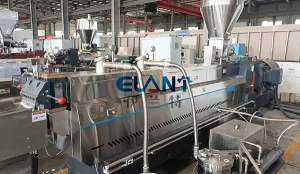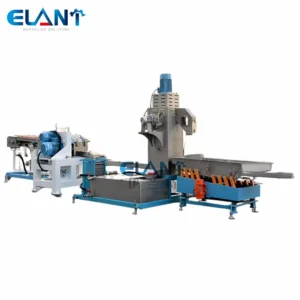Polyethylene Terephthalate (PET) is one of the most widely used plastics worldwide, particularly in the packaging industry. It is renowned for its strength, durability, and versatility, making it ideal for products such as plastic bottles, food containers, and even textiles. With growing environmental concerns surrounding plastic waste, PET recycling has become a key focus for industries looking to reduce their ecological footprint. The role of PET recycling machines is crucial in this process, as they help convert waste PET into new, reusable materials. This article will provide an in-depth look at PET plastic, the importance of PET recycling, and offer a comprehensive guide to selecting the right PET recycling machine for different needs.
What is PET Plastic?
Polyethylene Terephthalate (PET) is a type of thermoplastic polymer resin that is used in a variety of consumer products, primarily in the packaging sector. PET plastic is made through a chemical reaction involving terephthalic acid (PTA) and ethylene glycol (EG). The polymerization process forms long chains of PET molecules, which result in a strong, durable, and transparent plastic material.

Properties of PET Plastic
PET’s popularity in packaging and other industries is largely due to its impressive range of properties, including:
Strength and Durability: PET is highly resistant to impact and can endure physical stresses, making it ideal for items such as water bottles and food containers.
Lightweight: PET is a lightweight material, which reduces shipping costs and energy consumption during transport.
Transparency: PET plastic has excellent optical clarity, making it suitable for packaging products where visibility is important, such as beverages and cosmetics.
Chemical Resistance: PET is resistant to many chemicals and solvents, adding to its usefulness in food packaging and other industries.
Recyclability: One of the most important aspects of PET is its recyclability. PET can be reused multiple times without significant degradation, making it a key player in the circular economy.
The Importance of PET Recycling
With the rise of environmental awareness, the need to recycle PET has become more critical than ever. PET plastic waste contributes significantly to global plastic pollution, especially when it is improperly disposed of or discarded in landfills. Recycling PET offers several environmental and economic benefits:
1. Reducing Plastic Waste
PET is one of the most commonly used plastics, especially in single-use items like beverage bottles. Recycling PET helps reduce the accumulation of plastic waste in landfills and the environment, where it can take hundreds of years to decompose.
2. Energy and Resource Conservation
Recycling PET conserves valuable raw materials and energy. Producing new PET from virgin raw materials requires significant energy input. By recycling PET, manufacturers can save energy and reduce the need for new raw materials.
3. Sustainability and Circular Economy
Recycled PET (rPET) can be used to produce new plastic products, including new PET bottles, packaging materials, and textiles (such as polyester clothing). This helps create a circular economy where materials are reused rather than disposed of, reducing the carbon footprint associated with the production of new plastics.
4. Reduction of Greenhouse Gas Emissions
The recycling of PET requires less energy compared to the production of virgin PET, which leads to reduced greenhouse gas emissions. This contributes to global efforts to mitigate climate change.
The PET Recycling Process
Recycling PET involves several key steps to ensure that the material is cleaned, processed, and transformed into reusable products. These steps typically include:
Collection and Sorting: PET waste, such as bottles and containers, is collected from consumers and sorted to remove contaminants like labels, caps, and other non-PET materials.
Washing: The sorted PET is washed to remove any residual contents, dirt, or adhesives.
Shredding: The washed PET is shredded into small flakes or pellets to make it easier to process in the next steps.
Melting and Extrusion: The shredded PET is heated and melted to form a liquid, which is then extruded into new shapes or products.
Cooling and Solidifying: The melted PET is cooled and solidified into new forms, such as pellets, which can be used in manufacturing new products.

PET Recycling Machine Types and Selection
Choosing the right PET recycling machine is essential for efficient processing and maximizing the value of recycled PET. Depending on the scale of the operation, the type of PET waste being processed, and the desired end product, several different machines may be required in the recycling process.
1. PET Shredders
PET shredders are used in the initial stages of the recycling process to break down large pieces of PET into smaller, more manageable flakes. The shredded material can then be cleaned and further processed. There are two main types of shredders used for PET:
Single-Shaft Shredders: These shredders use one rotating blade to cut through PET materials. They are suitable for processing a variety of plastic waste and offer good efficiency for most recycling operations.
Double-Shaft Shredders: These shredders have two counter-rotating shafts with blades that work together to break down the PET. They are often used for tougher materials and can handle higher volumes of PET waste.
When selecting a PET shredder, factors such as the type of PET waste (e.g., bottles, films, or containers), desired output size, and throughput capacity should be considered.
2. Washing and Cleaning Systems
Once the PET is shredded, it needs to be thoroughly cleaned to remove any contaminants such as dirt, labels, and adhesives. Washing systems are crucial for ensuring the cleanliness of the PET flakes, which directly affects the quality of the recycled product.
Common washing equipment used in PET recycling includes:
Friction Washers: These use high-speed spinning and water to remove contaminants from the PET material.
Sink-Float Tanks: These tanks separate PET from lighter contaminants like paper or labels using water.
Drying Systems: After washing, the PET flakes are typically dried using centrifuges or air dryers to remove any remaining moisture.
Selecting the right washing system depends on the level of contamination in the input material and the required level of cleanliness for the final product.
3. Extruders and Pelletizers
Extruders are used in the later stages of the PET recycling process to melt the shredded material and form it into new shapes or pellets. The PET material is fed into an extruder, where it is heated and melted. It is then forced through a die to form long strands, which are cut into uniform pellets.
Single-Screw Extruders: These are commonly used for processing PET and are known for their ability to efficiently melt and shape the material.
Twin-Screw Extruders: These extruders are more advanced and offer better control over the extrusion process, making them suitable for processing PET that requires high-quality results or blending with other materials.
Pelletizers are used to cut the extruded strands into small, uniform pellets, which can then be used in the production of new plastic products.
4. Label and Cap Removal Machines
PET bottles often come with labels, caps, and other non-PET components that need to be removed before the recycling process can continue. Dedicated label and cap removal machines are designed to separate these items efficiently.
These machines typically use a combination of mechanical and chemical methods to remove labels and caps. The choice of machine depends on the type of bottles being processed and the desired level of separation.
5. Flake or Pellet Conveying Systems
Once PET flakes or pellets are produced, they must be conveyed to the next stage of the recycling process or stored for future use. Conveying systems, such as belts or pneumatic conveyors, are used to transport the shredded PET material efficiently.
The type of conveying system selected depends on factors such as the volume of material being processed, the distance to be covered, and the physical properties of the PET material.
Key Considerations for Selecting a PET Recycling Machine
When selecting a PET recycling machine, several factors must be taken into account to ensure optimal performance:
1. Input Material Type and Quality
Different machines are designed to process different types of PET waste. Whether you’re recycling bottles, films, or industrial PET waste will determine the type of shredders, washing systems, and extruders required.
2. Capacity and Throughput
The size and throughput capacity of the machine should match the scale of the recycling operation. Larger operations will require machines that can process higher volumes of material in shorter time frames.
3. Energy Efficiency
Given the energy-intensive nature of plastic recycling, selecting machines with energy-efficient features can reduce operational costs and minimize the environmental impact of the recycling process.
4. Automation and Ease of Operation
Automation features, such as automatic feeding and sorting, can increase the efficiency of the recycling process, reducing labor costs and human error. Choose machines that offer user-friendly interfaces and require minimal manual intervention.
5. Maintenance and Durability
Machines should be selected based on their durability and ease of maintenance. Regular maintenance is essential for ensuring the long-term performance of the recycling equipment and minimizing downtime.
Conclusion
PET plastic is a versatile and widely used material that has become central to many industries, particularly packaging. However, due to its environmental impact, recycling PET has become increasingly important. PET recycling machines play a critical role in transforming waste PET into valuable, reusable materials. By understanding the different types of machines available and the factors that influence machine selection, companies can make informed decisions that enhance their recycling operations and contribute to a more sustainable future.
With proper equipment, PET recycling can be both economically and environmentally beneficial, helping to conserve resources, reduce waste, and support the global effort to create a circular economy for plastics.
